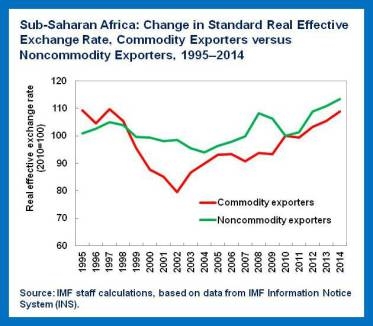
Our micro-finance companies are bleeding and struggling to maintain operations across the country. This claim is evidenced by the numerous bankruptcies and bank-runs which have characterised the industry in recent times. Though statistics on failed micro-finance companies are rare to come by, it is however clear — following the demise of several too-big-to-fail Micro-finance firms, such as ‘DKM’ and ‘God is Love’ — that the entire industry is floundering and may need life-support. In addition to this, there has been a substantial increase in the number of defunct microfinance offices scattered around the entire country.
Solving the micro-finance industry’s problems and challenges should be the collective responsibility of every Ghanaian given the industry’s contribution to the Ghanaian economy, especially in the field of job-creation. The industry employs more than 500,000 young graduates according to the Micro-finance Association, and stands a great chance of employing more graduates if all its challenges are properly addressed moving into the future. The industry can also boast of widening the country’s financial inclusion ratio by providing financial service products to the informal sector, once a highly averse field for commercial banks.
However, in recent times these benefits have been overshadowed by the grand-style bankruptcies of numerous badly-managed Micro-finance companies that unconsciously degenerated into Ponzi schemes. A personal study, after immense scrutiny of these defunct micro-finance companies, revealed some substantial operational and managerial problems that will require immediate redress in order to salvage the industry. These identified challenges, when left unresolved, can degenerate into dire consequence for all stakeholders in the industry and the Ghanaian economy as a whole. Salient among these identified problems were (1) Significant Asset-Liability Mismatching; (2) Huge Levels of Non-Performing loans; and (3) Unsustainable leveraging.
As noted from my study, most micro-finance companies in our country have huge problems in managing their assets and liabilities effectively. This asset-liability mismatch accounts for most of the bank-runs characterising Micro-finance Companies in recent times. Unfortunately, this mismatching is more structurally induced than a mere management problem, and therefore requires pragmatic policy interventions to address.
The operating structure for all micro-finance companies in Ghana is not supportive of Treasury bill investment, which is the only riskless and most liquid financial asset a bank can have. Deposits mobilised at rates higher than that offered by Treasury-bills and government notes make it impossible for them to invest in Treasury-bill space, therefore denying them the liquidity advantage that T-bills offer in times of liquidity challenges.
In response to their huge deposit cost, most MFCs invest almost all their deposits into high yielding loans given to unattractive clients of rural banks, un-bankable informal sector participants and high risk clients of commercial banking firms, at untenable and unsustainable rates of approximately 40-60% per annum. This situation creates a huge mismatch between their assets (loans) — which have a relatively longer duration/tenor; and deposits — which have a relatively shorter tenor. This therefore creates liquidity pressures and causes them to fail in times of huge deposit withdrawal.
Another significant contributor to the demise of these firms is their excessive non-performing loan ratios. Loan non-performance is relatively higher, given the peculiarities of the market in which these companies operate. However, proper scrutiny of their balance sheets and income statements indicate substantial growth in their bad loans. This can partly be attributed to the unfavorable economic environment that has exerted substantial economic pressures on the informal sector where they operate.
The BoG’s monetary and financial stability report released in the middle of 2015 showed a general increase in Non-performing Loan ratio for the entire banking sector, moving from 12% to approximately 13.5% for commercial banking firms in Ghana. This means that even the credit-wealthiest clients of commercial banks are defaulting, so how about microfinance clients? They are definitely going to default in a higher proportion because they lend to the riskiest clients in the economy.
Financial Stability Report-2015
The above notwithstanding, the loose credit standards for most micro-finance firms is a significant contributory factor to this non-performance in loan portfolio outstanding. The initial requirement for credit in most micro-finance firms was based on the individual’s cash flow payments, also known in local parlance as “susu”. Based on the consistency and magnitude of these contributions, a loan value and tenor would be determined by credit officers.
However, as demand for loans increased and consequent profitability soared, new players entered the fray due to its low barrier of entry and demand for deposits, or these Susu increased. This situation caused deposit rates to increase, as the micro-finance firms competed against each other for deposits to fuel their loan demand. All these factors affected credit standards and the business model that underpinned their industry.
The other constraint identified was the sector’s unsustainable leverage position (debt & fixed cost). Most micro-finance firms are highly leveraged in terms of debt. The proportion of debt in their capital structure is highly sustainable, with most of such debts emanating from short-term deposits that require payment within a period of three months.
In addition to this, those firms carry significant overheads in the form of personnel salaries, electricity bills, fuel and other direct charges that require payments within months. These fixed leverage costs strain most of the firms financially and even makes it worse when loans, their only source of income, start to non-perform or reduce their profitability.
Internal Source
Such leverage positions for Micro-Finance firms in Ghana are completely unsustainable and can only be resolved if the necessary fiscal measures are put in place. In my next post I will put out my three-point approach to help address these constraints.
Author: Emma Boakye Ogyem is an analyst with CS-Capital Advisors, and the opinions expressed in this document represent his own independent opinion based on his personal research and should not be misconstrued for those of his firm. The firm is therefore not liable for any material or factual misrepresentation implicit in this document.









